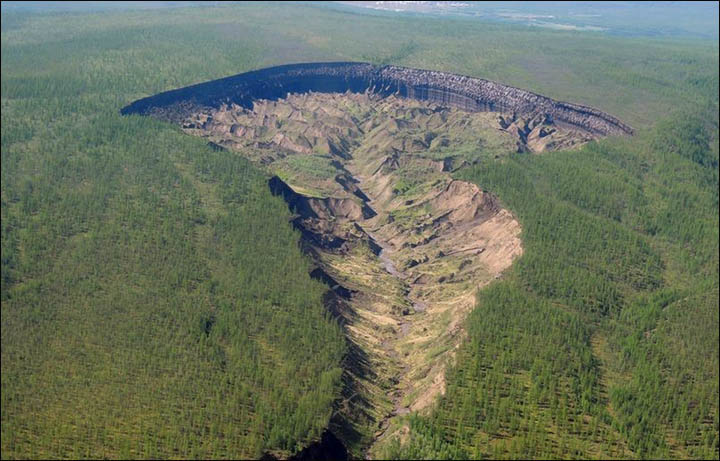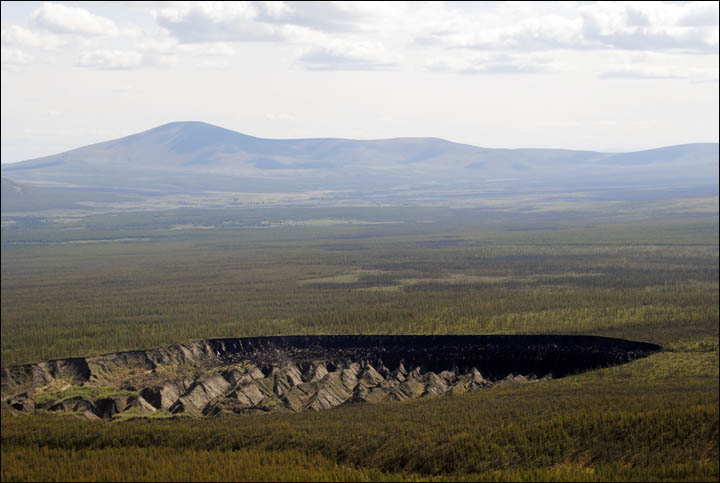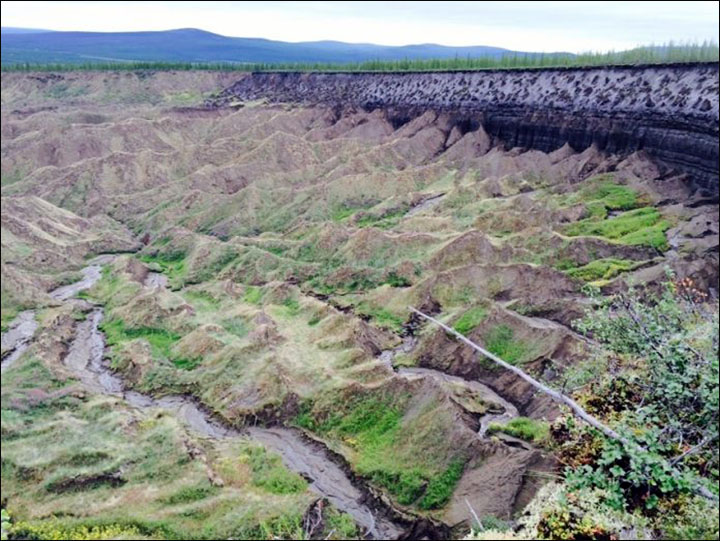Batgaika Crater - Siberia's Spectacular, Living (And Rapidly Expanding) Lab For Permafrost Loss
 Batagaika started to form in 1960s after a chunk of forest was cleared: the land sunk, and has continued to do so, evidently speeded by recent warmer temperatures melting the permafrost. Picture: Alexander Gabyshev
Batagaika started to form in 1960s after a chunk of forest was cleared: the land sunk, and has continued to do so, evidently speeded by recent warmer temperatures melting the permafrost. Picture: Alexander Gabyshev
Many Yakutian people are said to be scared to approach the Batagaika Crater - also known as the Batagaika Megaslump: believing in the upper, middle and under worlds, they see this as a doorway to the last of these. The fearsome noises are probably just the thuds of falling soil at a landmark that is a one kilometre-long gash up to 100 metres (328 feet) deep in the Siberian taiga.
Batagaika started to form in 1960s after a chunk of forest was cleared: the land sunk, and has continued to do so, evidently speeded by recent warmer temperatures melting the permafrost, so unbinding the layers on the surface and below. Major flooding in 2008 increased the size of the depression which grows at up to 15 metres per year.

 Such 'thermokarst depressions' can be observed in the north of Canada, but Batagaika is two-to-three times deeper. Pictures: Alexander Gabyshev, Research Institute of Applied Ecology of the North
Such 'thermokarst depressions' can be observed in the north of Canada, but Batagaika is two-to-three times deeper. Pictures: Alexander Gabyshev, Research Institute of Applied Ecology of the North
The result is an unparalleled natural laboratory for scientists seeking to understand the threat to permafrost due to climate change. A recent expedition to the partially manmade phenomenon sought to date the layers of soil which had been frozen in time as permafrost, and also to gather samples of plants and soil.
Until now, it was believed the layers of soil were around 120,000 years old. But Professor Julian Murton from the University of Sussex - who inspected the site near the village of Batagai, in Verkhoyansk district, some 676 kilometres (420 miles) north of Yakutsk, capital of the Sakha Republic - determined that the correct age is around 200,000 years old.
EDIT
http://siberiantimes.com/science/casestudy/news/n0678-200000-year-old-soil-found-at-mysterious-crater-a-gate-to-the-subterranean-world/


